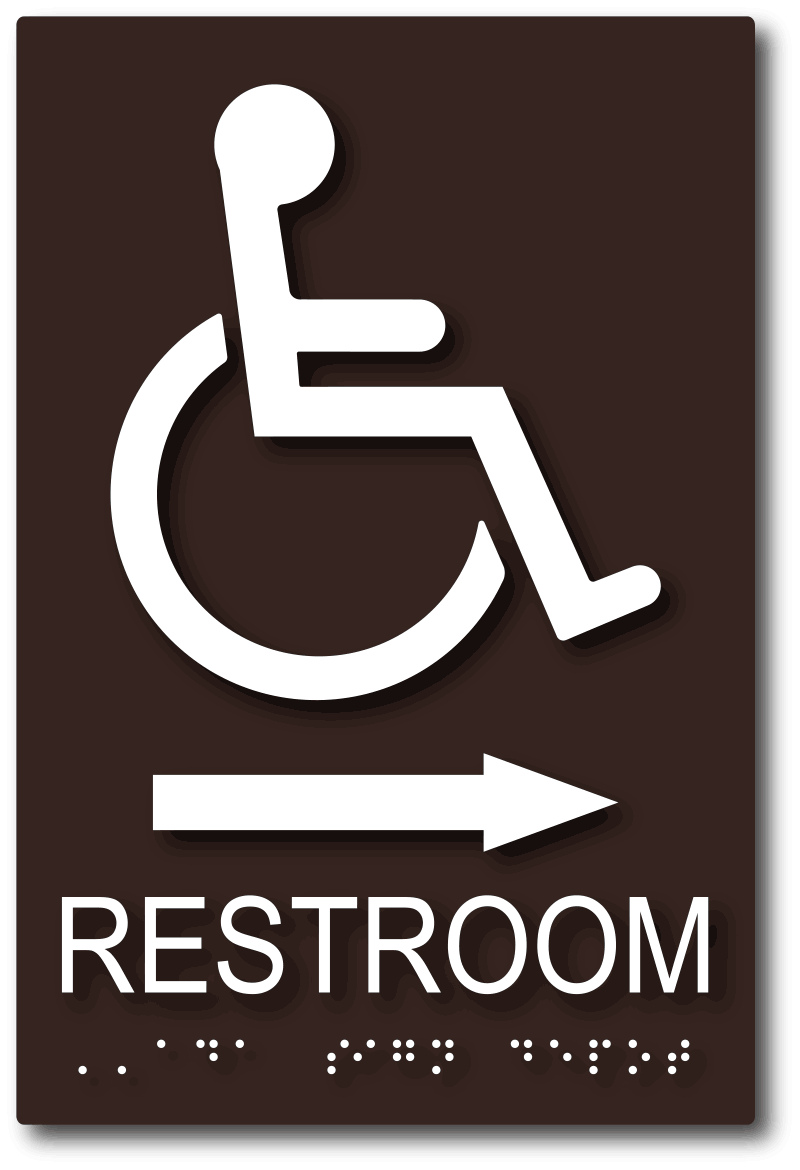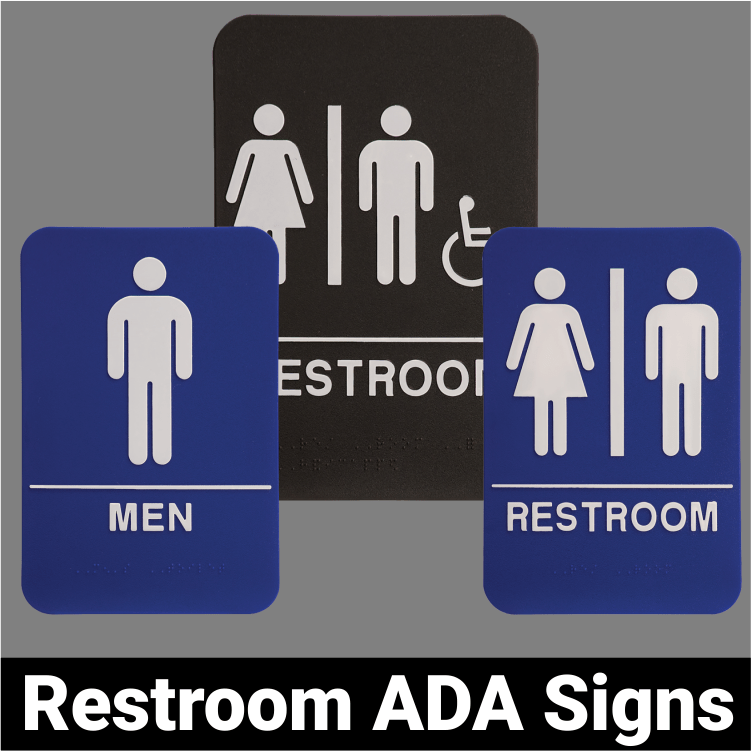Discovering the Secret Functions of ADA Indications for Enhanced Ease Of Access
In the realm of accessibility, ADA signs act as quiet yet effective allies, making certain that rooms are inclusive and navigable for people with specials needs. By integrating Braille and tactile components, these signs damage obstacles for the aesthetically impaired, while high-contrast color pattern and readable fonts deal with varied visual needs. Their critical placement is not arbitrary but instead a calculated initiative to assist in seamless navigation. Yet, past these functions lies a much deeper narrative regarding the development of inclusivity and the recurring commitment to developing equitable spaces. What extra could these signs indicate in our pursuit of global access?
Relevance of ADA Conformity
Ensuring compliance with the Americans with Disabilities Act (ADA) is crucial for promoting inclusivity and equivalent accessibility in public spaces and offices. The ADA, passed in 1990, mandates that all public centers, companies, and transportation services fit people with disabilities, ensuring they delight in the exact same rights and possibilities as others. Conformity with ADA standards not only fulfills legal commitments but also enhances an organization's reputation by showing its commitment to variety and inclusivity.
One of the crucial elements of ADA compliance is the execution of easily accessible signs. ADA indications are designed to ensure that individuals with impairments can easily navigate via buildings and rooms.
Moreover, sticking to ADA guidelines can reduce the danger of legal effects and prospective penalties. Organizations that fail to abide by ADA guidelines might deal with lawsuits or charges, which can be both harmful and economically troublesome to their public image. Thus, ADA compliance is essential to promoting a fair environment for everybody.
Braille and Tactile Elements
The unification of Braille and responsive aspects right into ADA signage personifies the concepts of access and inclusivity. These attributes are important for people who are blind or aesthetically impaired, allowing them to navigate public spaces with higher freedom and confidence. Braille, a tactile writing system, is crucial in giving composed info in a layout that can be easily perceived through touch. It is commonly placed below the matching message on signs to make sure that people can access the info without aesthetic aid.
Tactile elements extend past Braille and consist of increased personalities and signs. These parts are made to be noticeable by touch, enabling individuals to recognize space numbers, bathrooms, departures, and other crucial locations. The ADA sets certain guidelines concerning the dimension, spacing, and positioning of these responsive components to enhance readability and guarantee consistency throughout various atmospheres.

High-Contrast Color Design
High-contrast shade schemes play a critical function in improving the presence and readability of ADA signs for individuals with aesthetic disabilities. These schemes are vital as they maximize the distinction in light reflectance between message and history, making sure that signs are quickly discernible, also from a range. The Americans with Disabilities Act (ADA) mandates using specific informative post color contrasts to suit those with restricted vision, making it an essential facet of compliance.
The effectiveness of high-contrast colors lies in their capacity to stand apart in numerous illumination conditions, consisting of poorly lit atmospheres and locations with glow. Generally, dark message on a light background or light text on a dark background is used to achieve optimum contrast. Black text on a white or yellow history gives a stark visual difference that helps in fast acknowledgment and understanding.

Legible Fonts and Text Size
When considering the design of ADA signs, the choice of clear fonts and appropriate message dimension can not be overstated. The Americans with Disabilities Act (ADA) mandates that fonts must be sans-serif and not italic, oblique, manuscript, extremely ornamental, or of unusual kind.
According to ADA standards, the site web minimal text elevation must be 5/8 inch, and it should enhance proportionally with seeing distance. Uniformity in message size contributes to a natural visual experience, assisting individuals in navigating settings efficiently.
Furthermore, spacing in between letters and lines is important to legibility. Appropriate spacing prevents personalities from appearing crowded, improving readability. By sticking to these standards, designers can substantially improve access, guaranteeing that signs offers its intended objective for all individuals, despite their aesthetic capabilities.
Efficient Positioning Methods
Strategic positioning of ADA signs is essential for taking full advantage of availability and making sure compliance with lawful standards. ADA guidelines specify that indicators must be installed at a height in between 48 to 60 inches from the ground to ensure they are within the line of view for both standing and seated find more information people.
In addition, indicators need to be placed beside the lock side of doors to enable easy recognition prior to entrance. This placement helps people find rooms and rooms without obstruction. In cases where there is no door, indications ought to be positioned on the nearby adjacent wall surface. Uniformity in indication positioning throughout a facility enhances predictability, lowering confusion and boosting general user experience.

Verdict
ADA indicators play an essential duty in advertising access by incorporating attributes that attend to the needs of individuals with specials needs. These elements jointly cultivate a comprehensive atmosphere, emphasizing the value of ADA conformity in guaranteeing equal access for all.
In the world of ease of access, ADA signs offer as quiet yet powerful allies, ensuring that rooms are accessible and comprehensive for individuals with handicaps. The ADA, passed in 1990, mandates that all public facilities, employers, and transport solutions accommodate people with specials needs, ensuring they enjoy the same legal rights and possibilities as others. ADA Signs. ADA indications are developed to make certain that individuals with disabilities can conveniently navigate with areas and structures. ADA standards state that signs need to be installed at a height in between 48 to 60 inches from the ground to guarantee they are within the line of sight for both standing and seated people.ADA indications play an important role in advertising ease of access by incorporating features that resolve the needs of individuals with disabilities